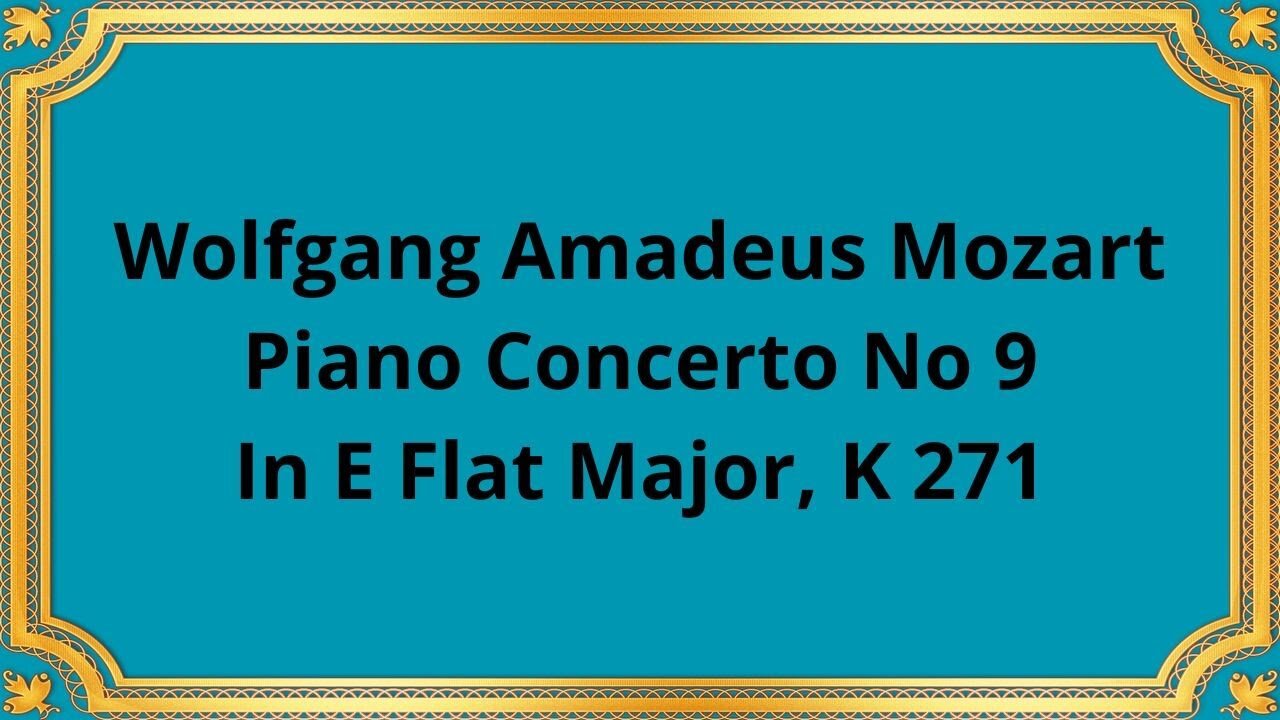Premium Only Content

Wolfgang Amadeus Mozart Piano Concerto No 9 In E Flat Major, K 271
#Mozart#Chamber_music#Classical_music#Piano_Concerto#Musical_composition
Publication date 1951
LILI KRAUS, Piano
With THE PHILHARMONIA ORCHESTRA,
WALTER SUSSKIND, Conductor
Wolfgang Amadeus Mozart's Piano Concerto No. 9 in E-flat major, K 271, is an exquisite masterpiece that continues to inspire generations of music lovers. This extraordinary concerto, also known as "Jeunehomme," is considered one of Mozart's most significant works for the piano. In this essay, we will delve into the beauty of this concerto, its history, and its timeless significance in the world of classical music.
Firstly, it is essential to understand the context in which Mozart composed this work. He wrote this concerto in 1777 when he was only 21 years old. At that time, Mozart was already known for his remarkable talent as a composer and pianist. The piece was written for a French pianist named Victoire Jenamy, whom Mozart called "Jeunehomme" (young lady). It is widely believed that Jenamy was the first to perform this concerto, and it was dedicated to her.
The concerto begins with a majestic orchestral introduction, which sets the tone for the entire piece. The first movement is full of contrasts and surprises, as Mozart introduces a variety of themes that are developed throughout the movement. The second movement is a beautiful and delicate andante that showcases the pianist's ability to express emotions through the instrument. The final movement is a lively and joyful rondo that brings the concerto to a delightful conclusion.
Mozart's Piano Concerto No. 9 in E-flat major, K 271, is a significant work in the history of classical music. It is a perfect example of Mozart's unique style, characterized by his ability to combine elegance and complexity in his compositions. The concerto is an excellent representation of the classical period, which focused on simplicity, balance, and clarity.
The "Jeunehomme" concerto is a challenging piece to perform, and it requires a high level of technical skill and musical interpretation. Pianists who perform this piece must be able to convey the emotions and nuances of Mozart's music while demonstrating their technical proficiency. The piece's technical demands include intricate fingering, fast passages, and complex rhythms, which require a high level of control and precision.
In conclusion, Mozart's Piano Concerto No. 9 in E-flat major, K 271, is a masterpiece that continues to inspire and captivate audiences around the world. Its timeless beauty and significance in the world of classical music make it a must-listen for any music lover. Whether you are an experienced musician or a casual listener, this concerto will leave you in awe of Mozart's genius and the power of music to touch our hearts and souls.
-
 10:37
10:37
Russell Brand
2 days agoHow is this even allowed?
101K681 -
 1:37:26
1:37:26
Real Coffee With Scott Adams
2 hours agoEpisode 2701 CWSA 12/26/24
26.9K7 -

Wendy Bell Radio
6 hours ago9 Steps Ahead
51.3K96 -
 LIVE
LIVE
LFA TV
15 hours agoTIME FOR A NEW SPEAKER! | LIVE FROM AMERICA 12.26.24 11am EST
4,472 watching -
 1:40:22
1:40:22
Game On!
12 hours ago $3.86 earnedNFL Thursday Night Football Seahawks at Bears EXPERT Picks!
25.2K4 -
 DVR
DVR
xBuRnTx
2 hours agoWho's Ready for New Years!
16.3K1 -
 12:09
12:09
Tactical Advisor
14 hours agoSmith & Wesson Shield Plus Carry Comp
12K1 -
 4:35:25
4:35:25
Father Russell
7 hours agoDelta Force | Not A Woman? | Mad Martigan Time
54.8K3 -
 3:29:42
3:29:42
BrookieMonster
14 hours ago $44.15 earnedChristmas Stream: Marvel Rivals with CallmeSeags 🎄
175K13 -
 LIVE
LIVE
TheSaf3Hav3n
4 days ago| RUMBLES FIRST SUBATHON IS HERE!!! | DAY 4 |
390 watching